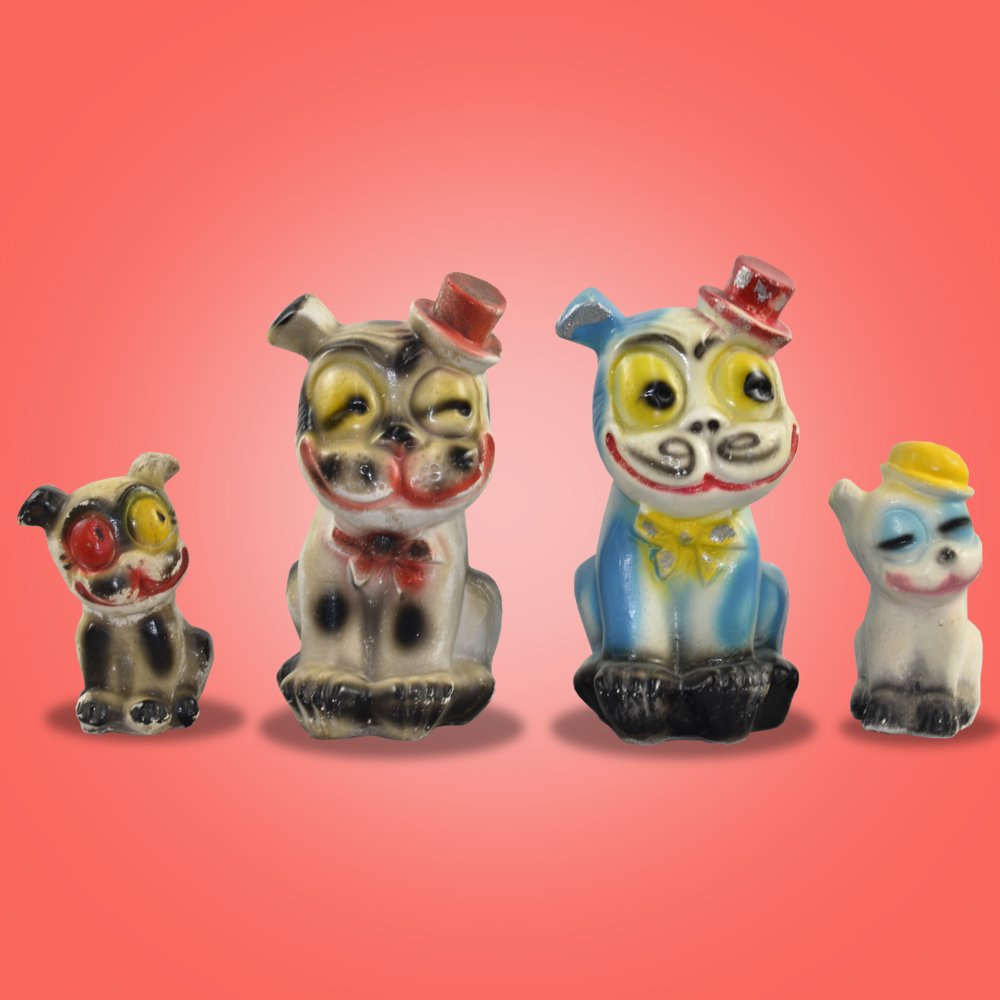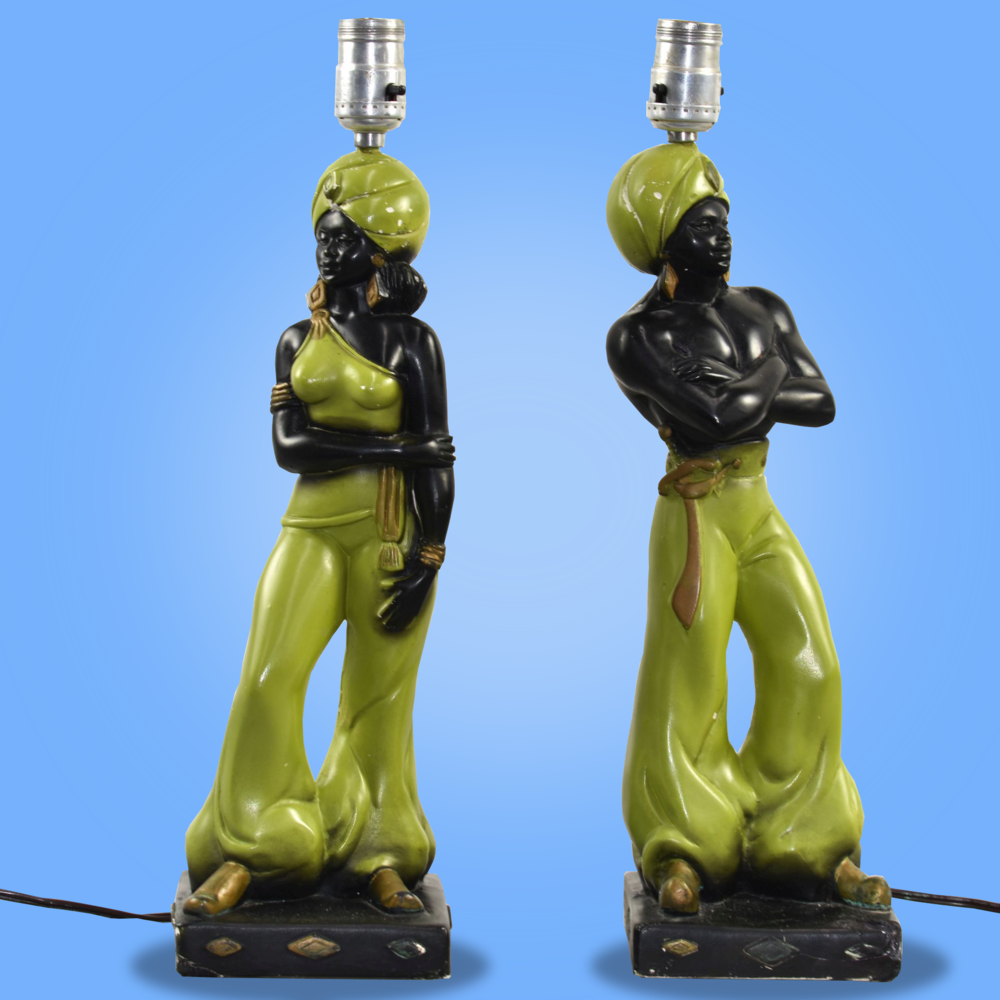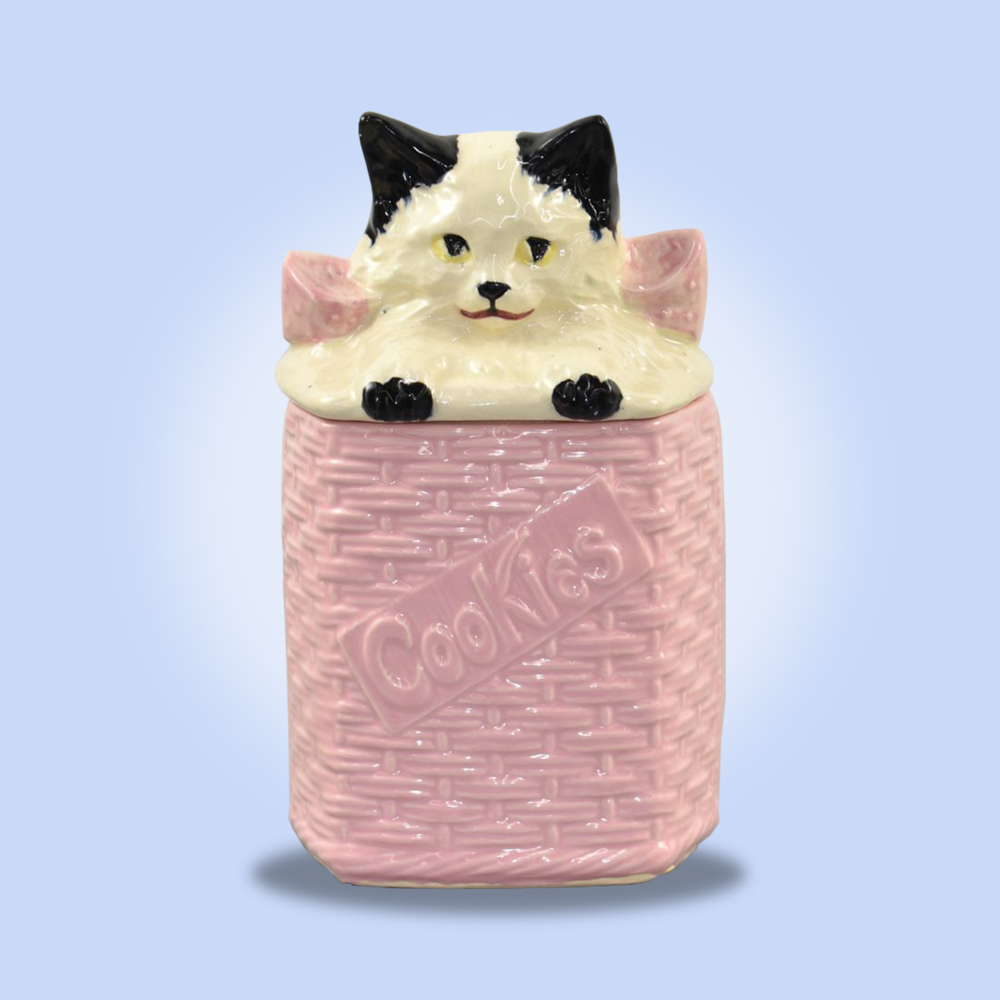10/17/2023 General, General Paintings, General Furniture & Decorative Arts
Shopping at Hayloft Auctions! October 2023
Browse the October sale at Hayloft Auctions where you'll be inspired to create cozy interiors for the cooler months ahead! Soft close Monday at Noon.
05/16/2023 General
A Brief History of Silver
Silver has been a valuable resource throughout history and continues to be admired for its beauty, durability, and versatility. Silver is popularly used within a wide range of objects, ranging from jewelry among other luxury items, to utilitarian pieces like flatware and coinage. This post focuses on silver’s place within our history along with looking at the enduring appeal that has perpetuated silver’s relevance.

Lot 37, German 800 silver menorah
The history of silver mining can be traced back about 5,000 years ago. The first recorded silver mining occurred in modern-day Turkey, where this precious metal played a significant role in the growth of early civilizations surrounding Ancient Greece. Later on, silver mining moved to Spain, where it became a crucial backbone of the Roman Empire and was vital to the success of the silk road.
Contact between Europe and the Americas was a crucial turning point in silver’s history, considering that from 1500-1800 central America was responsible for over 85 percent of global silver production and trade. Gradually, silver mining spread around the world, inadvertently prompting the discovery of the Comstock Lode in Nevada in 1859, one of the largest spines of silver in the United States. The discovery of the Comstock Lode in Nevada is said to have been as popular as the gold rush in California back in 1849 and propelled silvers legacy into the 20th century.
.jpg)
Lot 403, Set of 4 sterling silver goblets
In the 1870s, global silver production doubled due to accelerated technological innovation and the exploration of new regions. The roaring twenties resulted in yet another 50% increase in global production, with new discoveries in Canada, the United States, Africa, Mexico, Chile, Japan, and many other regions. Advances in refining techniques have significantly increased the volume of production, as many of the high-grade ores around the world had been used up by the end of the 19th century.
Today, over 5,000 years after the ancient cultures first began mining silver in small amounts, silver's popularity has grown over the years for its rich history, beauty, and versatility. Whether you're a collector, a decorator, or simply someone who appreciates fine craftsmanship, silver articles offer a timeless appeal that is sure to endure for generations to come. Hayloft is excited to offer over 30 silver lots in this upcoming auction, which opens on Wednesday, May 17th, and Closes on Sunday night May 21st.
.jpg)
Lot 252, Dutch 800 silver tea set with tray
04/19/2023 General
Paul Leucian Dessau
.jpg)
Lot 458 - Paul Lucien Dessau, Dummer Boy
Paul Leucian Dessau (1909-1999) was a British artist, entrepreneur, and fireman. Dessau grew up in North London with his brother and mother after losing his father early in life. He was an artistically gifted child and worked an apprenticeship for a commercial studio after high school. After working a year, Dessau and his brother launched their own commercial studio. The venture gave them more creative freedom and placed Dessau's paintings in local London art galleries and shows.
World War II impeded Dessau's career as an artist. Despite his growing popularity, Dessau failed to earn a commission from the Royal Family to document the war. One possibility is that the wartime art commissioner thought Dessau's expressionist style might obstruct the historicity within his documentation.
To evade the Draft for the British Military, the Dessau brothers joined the London Auxiliary Fire Service right before the German Blitz of the United Kingdom from 1940-41. Dessau decided to document the war through his paintings. By 1941, realizing he was not the only artist to join the civil defense in response to the war, Dessau recruited fellow artists to document their wartime experiences through their renderings. He became a founding member of the Fireman Artist's Committee, working directly with the London Fire Brigade to provide materials and safe studio spaces for artists to document their wartime experiences.
Lot 464 - Paul Lucien Dessau, The Cyclist
Paul Leucian Dessau created an opportunity where he was able to continue developing his artistic ability and aesthetic, while also documenting the many atrocities and grievances of war. Many of Dessau’s wartime depictions included demonic figures emerging from the flames and smoke from the Blitz, exaggerating the horrors of war. Historians attest that Dessau’s paintings are some of the most vivid images of these conflagrations that resulted from the German Blitz.
After the war, Dessau moved to the countryside with his wife to continue his career as an artist. He experimented with new mediums, evoking a sense of intentionality. This emphasis is evident within the hands of the figure depicted in Lot 458, as many of his paintings suggest emotions through expressive gestures. Hayloft Auctions is pleased to offer three works by Paul Dessau in our April auction – lots 458, 459, and 464. Browse the catalog and place your bids before the sale closes on Sunday, April 23rd.
03/15/2023 General
Bronze Sculptures

Lot 126 -Bronze sculpture of a Male with a sword
This lot is available in Haylofts March sale, opening the 15th at 12pm and closing March 19th.
Bronze sculpture has a long history, and works in bronze have been admired and loved by collectors for centuries. The most celebrated pieces, including original works by Auguste Rodin and Edgar Degas, can be found in museums and fine private collections. These important works are valued for their groundbreaking design, superb craftsmanship, and rich history. Owing to their high value and, often, their sheer size, original bronzes are beyond the reach of many collectors. However, small, well-crafted reproductions of famous works can be had much more affordably.
Fine bronze reproductions are made using the same exacting techniques of casting and polishing that were used to create the originals. As a result, the best examples are remarkably accurate, scaled-down models of those pieces. Because of this close relationship, these reproductions evoke the same aesthetic feelings as the original works.
We offer you an opportunity to own a piece of art history with a reproduction of a classic bronze sculpture. Hayloft Auctions is pleased to offer Lots 125 and 126 in our upcoming sale. Either would be a perfect piece to complete an office or living space. Browse the catalog and place your bids before the sale closes on Sunday, March 19th.
11/11/2022 General
Fun Facts: Chinese Hardstone Carvings
.jpg)
Chinese Carved Jade Pendant
The carving of jade and other treasured hardstone materials such as soapstone, rock crystal and lapis lazuli is one of that China’s oldest art forms, dating back to the Neolithic Age. Over the course of millennia, the artistry and carving techniques perfected by Chinese lapidaries endured through numerous dynastic changes. Trade routes brought massive imports of precious stones to China’s capital cities where imperial and literati tastes had an enormous influence on the style and quality of Chinese hardstone carvings.
Scholar-Officials and aristocrats typically kept collections of jades and other hardstones in their residences to represent their status and good fortune. Many such carvings reference the blessing of prosperity and convey wishes of continued fortune. A nephrite jade pendant in Hayloft's November sale exemplifies this kind of symbolism. The pendant depicts a young boy surrounded by three dragons. The child symbolizes contentment and good fortune, while the three auspicious dragons signify strength and achievement.
Hardstone carvings remain an important traditional artform in Chinese culture. Chinese collectors and others worldwide actively maintain a dynamic and healthy market for jade and other hardstone carvings – from Chinese prehistory through to the 21st century.
View Asian works of art and more in Hayloft’s November auction. Explore the catalog and place your bids before the sale closes on Sunday, November 13.
05/10/2022 General
Who is Bjorn Wiinblad?
Bjorn Wiinblad is a name that appears frequently in our sales, often associated with adorable ceramic figures and table articles. Wiinblad was a professionally trained artist not only in ceramics, but in drawing and painting, textiles, even set-design. He was a productive and enthusiastic artist, and was regarded as one of the wealthiest Danish artists of his time, at one point owning several houses across the country. Despite all his international success and fame, he still managed to find show his joie de vivre, or an enjoyment for life, throughout his extensive collection of work. Here is a timeline of the artist's life and career.
.jpg)
Lot 21 - Bjorn Wiinblad Glazed Ceramic Figures
This lot is available in Haylofts May sale, opening the 11th and closing May 15th. The usage of bright colors, lines, patterns, and those playful, almond-shaped eyes are all Wiinblad motifs.
1918 — Born in Copenhagen, Denmark.
1935 — Age 17, begins apprenticeship in typography, but quickly discovered he wanted to train to become an artist.
1940 – He was accepted into The Royal Danish Academy of Fine Arts’ Graphic Programme.
1943 - Introduced to ceramics through a classmate. Learned the “cow horn technique,” in which a cow horn is filled with paint and is used to create very thin lines. Would use this technique on his ceramics.
1945 — Graduated from the Academy and made his artist debut, hosting an extensive show that showcased not just his ceramics, but drawings, posters, and other works.
1948 — Wiinblad is gaining popularity quickly, and is recruited to work in the Nymolle earthenware factory. This enables him to crank out much more of his iconic ceramic pieces, like bowls, cups, candlesticks, dishes and ashtrays. This was also when he began to gain international attention.
1949 — Completes several drawing projects for the U.N. in Paris, and designs costumes and sets for theatrical performances.
1950 — Ceramics were exhibited at Bonniers, a furniture store, in New York City.
1951 — Establishes his own workshop in a town north of Copenhagen.
1960 — Appointed as artistic director for Rosenthal porcelain, further developing his international career.
1969 — A lover of classical music, Wiinblad designed and created a dinner service for Rosenthal inspired by Mozart's opera, titled the Magic Flute. It ended up being so intricate and detailed that it took the factory several years to complete.
1971— Wiinblad was commissioned by the Shah of Iran’s wife to design a porcelain dinner service to celebrate the anniversary of the Persian empire. This was one of the most important and lavish events of the 20th century, filled with high-profile guests.
1988 — Made a poster for the Paralympic Games in Seoul, which ended up being his most successful poster. In his older age, he made mostly posters, which he made free of charge for charitable organizations.
1990 — Wiinblad was commissioned by an exclusive hotel in Denmark to refurbish and redoracte their entire dining room. This required many tiles, chandeliers, large porcelain figures, and some of Wiinblad’s old motifs, like florals and whimsical faces.
2006 — Passed away in Denmark.
You can find lot 21, and other Bjorn Wiinblad pieces, in Haylofts May sale. Opening Wednesday May 11th at noon and closing on Sunday May 15th at 7pm. All information provided from the Bjorn Wiinblad Foundation, https://www.bjornwiinblad-denmark.com/meet-bjoern-wiinblad.

Image from the Bjorn Wiinblad Foundation
04/04/2022 General
Elegance at Hand: A Brief History of Cigarette Holders
A case of Zeus Cigarette Holders featured in Hayloft’s April sale will transport you back to a bygone era. As you open the case, you’ll find yourself wishing you were sitting outside a Parisian cafe with black satin evening gloves and an empty coffee cup artfully arranged on the white tablecloth in front of you.
If the image of Audrey Hepburn in an updo holding a cigarette holder immediately came to mind, you may be surprised to know that cigarette holders were initially used by men as it was considered inappropriate for American women to smoke in public. After the 19th amendment was passed, granting women the right to vote, cigarette smoking became more common among the younger generations and an elegant, often feminine accessory was born.
Cigarette holders were used throughout the 20s, 30s and 40s – before filtered cigarettes were invented – to keep the user from inhaling tobacco flakes. They also prevented ash from falling on clothes. As they began to be used widely, cigarette holders became as decorative as they were practical.
Cigarette holders came in different sizes, styles and designs for different occasions. Longer lengths were used for more formal events, while the shortest was used for a casual smoke at home. These accessories served as a form of self-expression in a society that valued stepping out and enjoying themselves. Many examples of cigarette holders can be found in films, fashion and images of everyday life.
For obvious reasons, cigarette holders became less popular as technology and attitudes toward smoking shifted in the United State and elsewhere. Although their use has fallen out of fashion, cigarette holders still reveal a great deal about the time periods from which they originated. Form, function and style combined to create beautiful examples of craftsmanship and elegant design.
Hayloft’s upcoming sale will be open for bidding from April 6th through April 10th. Find Lot 17, the Zeus Cigarette Holders, and many others when the online catalogue opens.
03/11/2022 General
The Revival of Mid-Century Modern Design
If you’ve watched a television show or movie in the last year, chances are you’ve spotted some Mid-century modern set designs. With the resurgence of the Mid-century modern style in pop culture touchpoints like Mad Men, Loki and even The Incredibles, many collectors, decorators and new homebuyers are gravitating towards furniture pieces inspired by – or sourced directly from – the 1950s and 60s.
Mid-century modern style furniture pops up all over the place. These pieces are perennially popular and timeless due to their simplicity, form and functionality. Mid-century modern pieces are easy to integrate with furniture from other eras, which allows buyers to build a space they truly resonate with. Exposed or finished wood, leather, metal, and earth tones are all sought-after design traits abundant in the Mid-century modern era of design.
Hayloft offers plenty of Mid-century design inspiration, including an Aalvar Aalto bentwood chair that sold for $95.00 and a Mies Van der Rohe-esque leather bench that sold for $1,000.00 this past February.
Featured in our March 13th auction is a Mid-century modern style leather lounge chair (Lot 409). Reminiscent of furniture produced by Mid-century design icons Charles and Ray Eames, this lounge emphasizes luxury, relaxation, craft and elegance. Also offered in March is a flos arco floor lamp, complete with marble base (Lot 357). These items are sure to be sought after by new and experienced collectors!
Mid-century modern never goes out of style. Find mid-century and more interesting and unique pieces by perusing the March auction catalog – bidding closes Sunday, March 13th beginning at 7pm!
03/09/2022 Jewelry
The Estate of June Marston Dyson
Doyle is honored to auction jewelry from the Estate of June Marston Dyson, a pioneering woman in the legal profession and a generous donor to many of New York's cultural institutions.
01/22/2022 General
Chalkware: A Point of American Accessibility
Long before cheap plastics invaded our homes, there was Chalkware. Chalkware was made and sold in America as early as 1770, created from a formula of gypsum and plaster of Paris that could be molded into a variety of shapes and sizes. For many average families, porcelain and ceramics were still expensive, and some early chalkware designs from the 19th century were made to resemble the more expensive varieties of things like English Staffordshire. By the 1930s, chalkware became a perfect material to make whimsical carnival prizes, like dogs with funny hats, and cats, airbrushed in bright color with glitter! (lots 22-25) By the 1950s and 1960s a diverse array of figural lamps, wall plaques, and other types of decorative items became synonymous with the mid-century look. Ceramics were still expensive and somewhat limited in the post-war years, but the market for stylish, modern design was booming, and chalkware fit the mold as an available and affordable alternative. Chalkware’s earliest production can be traced to cities in Pennsylvania, so it is no surprise that a company like the Pittsburgh Statuary Company continued the tradition; their designs are among the most collected from the period. (lots 47-50) One problem with chalkware was its lack of durability, and its popularity faded by the 1960s, and once again ceramics reclaimed its place in the home. Manufactures like Hull, an Ohio based company, and McCoy (lot 1, lot 139, 141) were able to meet the demand for on trend styles. Even after a fire devastated the Hull factory, the Hull wares were so in demand, they were able to quickly rebuild and offer customers new designs like the Pine pattern and Continental line (lot 133, 137).

Lot 22 in Hayloft DC January Auction: Four Carnival Chalkware Figures

Lot 48 in Hayloft DC January Auction: Pair PGH Statuary Co. Figural Chalkware Lamps

Lot 1 in Hayloft DC January Auction: Vintage McCoy Cat's in the Basket Cookie Jar

Lot 133 in Hayloft DC January Auction: Two Pieces of Hull Pottery
These are all the lots for the Hayloft DC January Auction! Happy bidding!
.jpg)